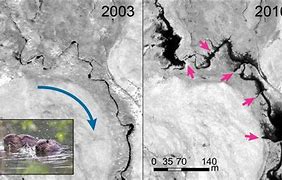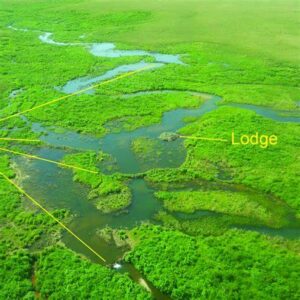
Beavers wreak havoc on the Alaskan tundra
The Alaskan tundra has a growing beaver population. And the permafrost layers of soil that once stayed frozen year-round, are thawing. Permafrost covers about one-quarter of the northern hemisphere, including nearly 85% of Alaska.
As temperatures rise, the permafrost thaws. And the greenhouse gases carbon dioxide and methane are being released into the atmosphere.
The beaver chews up and carries wood to build dams. And the dams clog rapidly flowing rivers and streams and turn them into lush ponds.
“There’s not even a lot of other animals that leave a footprint you can see from space. There is one, and they’re called humans. The funny thing is that humans could not get a permit to do what beavers are now doing in this state,” Tape said.
“Beavers really alter ecosystems,” says Thomas Jung, senior wildlife biologist for Canada’s Yukon government.
The ponds they create, increase biodiversity but may also play a role in accelerating climate change.

A-BON Network studies continue
According to the Arctic Beaver Observation Network (A-BON):


